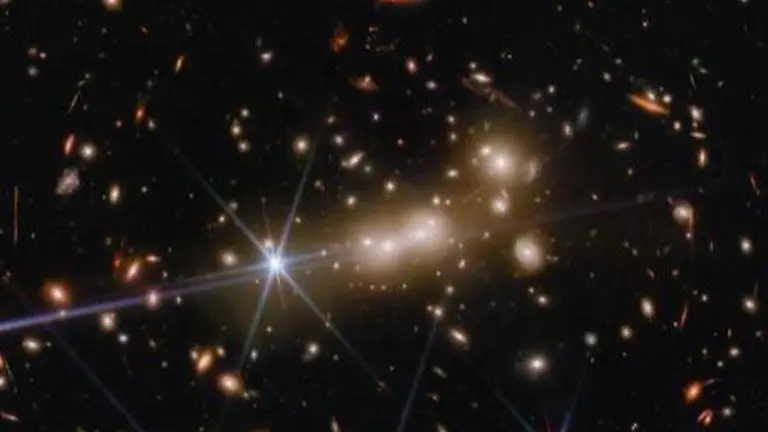Updated 29 October 2022 at 18:15 IST
James Webb Space telescope uncovers hidden galaxy missed by NASA's Hubble
James Webb Space Telescope has uncovered a new galaxy next to a discovered one that belongs to the earliest period of the universe, as per NASA.
- Science News
- 2 min read

What went unnoticed by the Hubble telescope has been spotted by the world’s most powerful observatory. The James Webb Space Telescope has uncovered a new galaxy next to a discovered one that belongs to the earliest period of the universe. NASA revealed that Webb used the gravitational lensing phenomenon to observe the galaxy named MACS0647-JD which formed in the first 400 million years of the big bang.
🔎 The combination of Webb’s super powerful vision and a magnifying trick of gravity is allowing astronomers to resolve things never before seen in the early universe. Let’s dive into the mysteries of distant galaxy MACS0647-JD: https://t.co/W6ZdvVqkIb pic.twitter.com/8gTmHfoaz3
— NASA Hallo-Webb Telescope 🕸🕷🎃 (@NASAWebb) October 26, 2022
Webb outshines Hubble
Dan Coe, who discovered MACS0647-JD ten years ago using Hubble said that it was a pale red dot as the galaxy is one of the most distant, about 97% of the way back to the universe's beginning. "Now we look with Webb, and we’re able to resolve two objects! We’re actively discussing whether these are two galaxies or two clumps of stars within a galaxy. We don’t know, but these are the questions that Webb is designed to help us answer", the astronomer said in an official statement.
(MACS0647-JD appears in three locations due to gravitational lensing; Image: NASA, ESA, CSA, STScI)
The new galaxy next to MACS0647-JD came to light due to the phenomenon of gravitational lensing caused by the galaxy cluster named MACS0647. This cluster has such strong gravity, that it is warping the space around it causing the galactic system to appear at three different locations. Under this phenomenon, a massive object (the cluster in this case) acts as a natural lens and magnifies the object behind it (the galaxy system). Coe explained that the system has been lensed into three images-- JD1, JD2, and JD3 above-- and they’re magnified by factors of eight, five, and two, respectively.
Advertisement
"You can also see that the colors between the two objects are so different. One’s bluer; the other one is redder. The blue gas and the red gas have different characteristics", astronomer Tiger Yu-Yang Hsiao said. "The blue one actually has very young star formation and almost no dust, but the small, red object has more dust inside, and is older. And their stellar masses are also probably different".
Moreover, NASA also shared pictures comparing views from Hubble and the Webb telescope, however, the latter completely outshines the former. Moving forward, scientists would aim to determine if the two galaxies are merging or is it just two clumps of stars within a galaxy.
Hubble had observed galaxy MACS0647-JD, but where Hubble saw one object, Webb saw TWO! Are they two galaxies merging? Or two clumps of stars within a galaxy? We don’t know yet, but Webb could help figure it out.
— NASA Hallo-Webb Telescope 🕸🕷🎃 (@NASAWebb) October 26, 2022
*Data is from Webb science in progress, not yet been peer reviewed. pic.twitter.com/EDWS9VnnDt
Published By : Harsh Vardhan
Published On: 29 October 2022 at 18:15 IST

